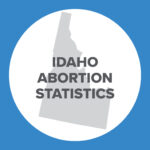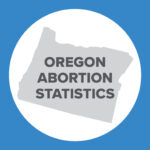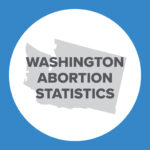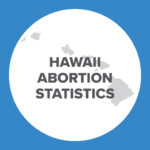Abortion Reporting: New Mexico (2021)
New Mexico has not released a vital statistics report since September 2021, when a report covering 2019 data was published. However, New Mexico shared some abortion data with the United States Centers for Disease Control and Prevention (CDC) for inclusion in its 2021 abortion surveillance report. The data analyzed here is from the CDC’s 2021 report.
Statistics and Changes in New Mexico Abortions, 2020-2021

The report does not include Planned Parenthood’s New Mexico abortion market share.
Abortion Totals and Trends
According to the CDC, 4,891 abortions were performed in New Mexico in 2021, an increase of 14% from 2020. Resident abortions decreased in 2021, while abortions performed on out-of-state residents increased and accounted for over 40% of total New Mexico abortions, compared to 30% in 2020 (Fig. 1). Charlotte Lozier Institute (CLI) estimates that the state’s abortion rate was 12.1 abortions per 1,000 women ages 15 to 44, an increase of 13% from 2020 (Fig. 2).1 In 2021, 43% of the abortions performed in New Mexico were chemical and 44% were surgical, although there was a significant percentage of abortions performed using unknown methods (12%).
State Report Summary
Twelve percent of New Mexico abortions were performed on girls ages 19 or younger, with less than 1% on girls under the age of 15 and 11% on girls ages 15 to 19. Twenty-eight percent of the abortions were obtained by women in their early twenties, and 26% by women in their later twenties. Twenty-seven percent of the abortions were performed on women in their thirties, and 3% on women in their forties or older.
Half of the abortions performed in New Mexico were on Hispanic women. Twenty-one percent were on non-Hispanic white women, and 7% were on non-Hispanic black women. Nine percent were performed on non-Hispanic women of other races and 14% on women of unknown races. CLI estimates that the black abortion rate of 43.5 abortions per 1,000 women ages 15 to 44 was five times the white abortion rate of 8.8. Seventy-seven percent of New Mexico abortions were performed on unmarried women, while 15% were obtained by married women. The marital status of 8% of women was unknown.
Thirty-eight percent of abortions performed in New Mexico were on women with zero prior live births, 19% on women with one prior live birth, and 32% on women with two or more prior live births. The number of prior live births was unknown for 11% of the women who obtained abortions in New Mexico. Twenty-four percent of women who obtained abortions in New Mexico had zero prior abortions, and 50% had one prior abortion. Twenty-two percent of women had two or more prior abortions. The number of previous abortions was not known for 4% of the women.
Thirty-seven percent of New Mexico abortions occurred at six weeks of gestation or earlier, 26% between seven and nine weeks, and 12% between 10 and 13 weeks. Three percent were performed between 14 and 15 weeks and 2% between 16 and 17 weeks of gestation. Four percent of abortions occurred between 18 and 20 weeks, while 8% (390 abortions) occurred at 21 weeks of gestation or later, one of the highest late-term abortion totals in the country.
Abortion in New Mexico After the Dobbs Decision
As CLI has previously summarized, abortion remains legal throughout pregnancy in New Mexico following the overturn of Roe v. Wade. Because of this and its geographical location amongst states with strong life-at-conception laws such as Texas, New Mexico has become a hub of interstate abortion commerce. New Mexico overtly and proudly advertises that late-term abortions are legal in the state, even going so far as setting up an abortion hotline that helps in- and out-of-state women obtain abortions in the state. Because of the lack of limits on when an abortion can be performed and the state’s aggressive promotion of its radical policies, a number of abortion centers in pro-life states that closed after Roe was overturned moved to New Mexico. Four Texas Whole Woman’s Health centers announced they would be moving to eastern New Mexico towns (Clovis, Hobbs, and Roswell) in close proximity to the Texas border, and the last operative abortion center in Mississippi, the one involved in the Dobbs v. Jackson case, closed its Mississippi location after the Dobbs decision and moved to Las Cruces, New Mexico. Planned Parenthood has also reported that its New Mexico locations have had to limit non-abortion services in order to accommodate the surge of Texas women seeking abortions in New Mexico.
State Ranking
In 2016, CLI published a paper evaluating abortion reporting across the country, and New Mexico’s reporting was ranked at 42nd. To improve its reporting, New Mexico could report abortions in a timely manner that is more accessible to the public. New Mexico could also report the reasons abortions were performed, particularly for late-term abortions, given the large percentage of New Mexico abortions that are late term.
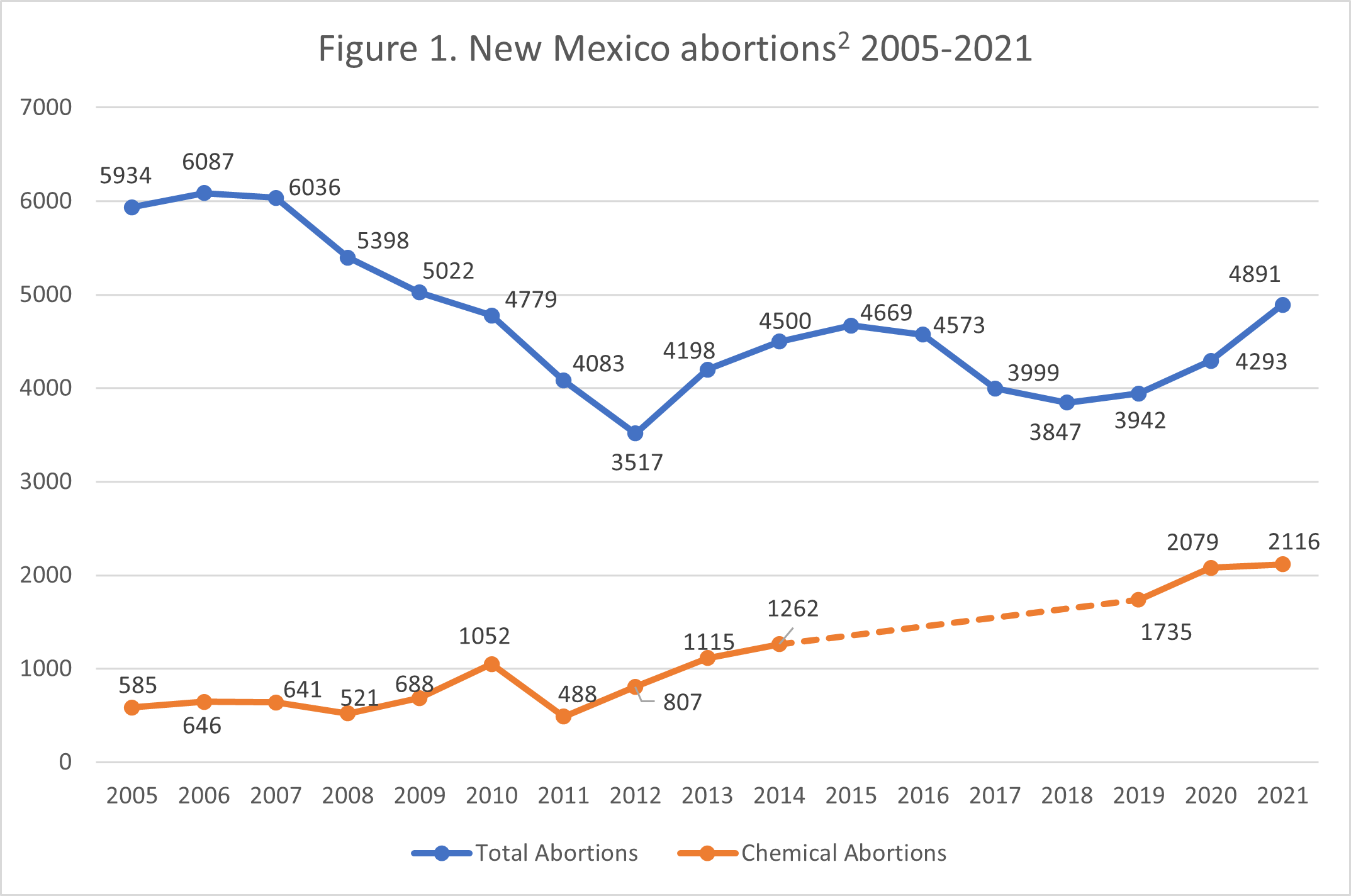
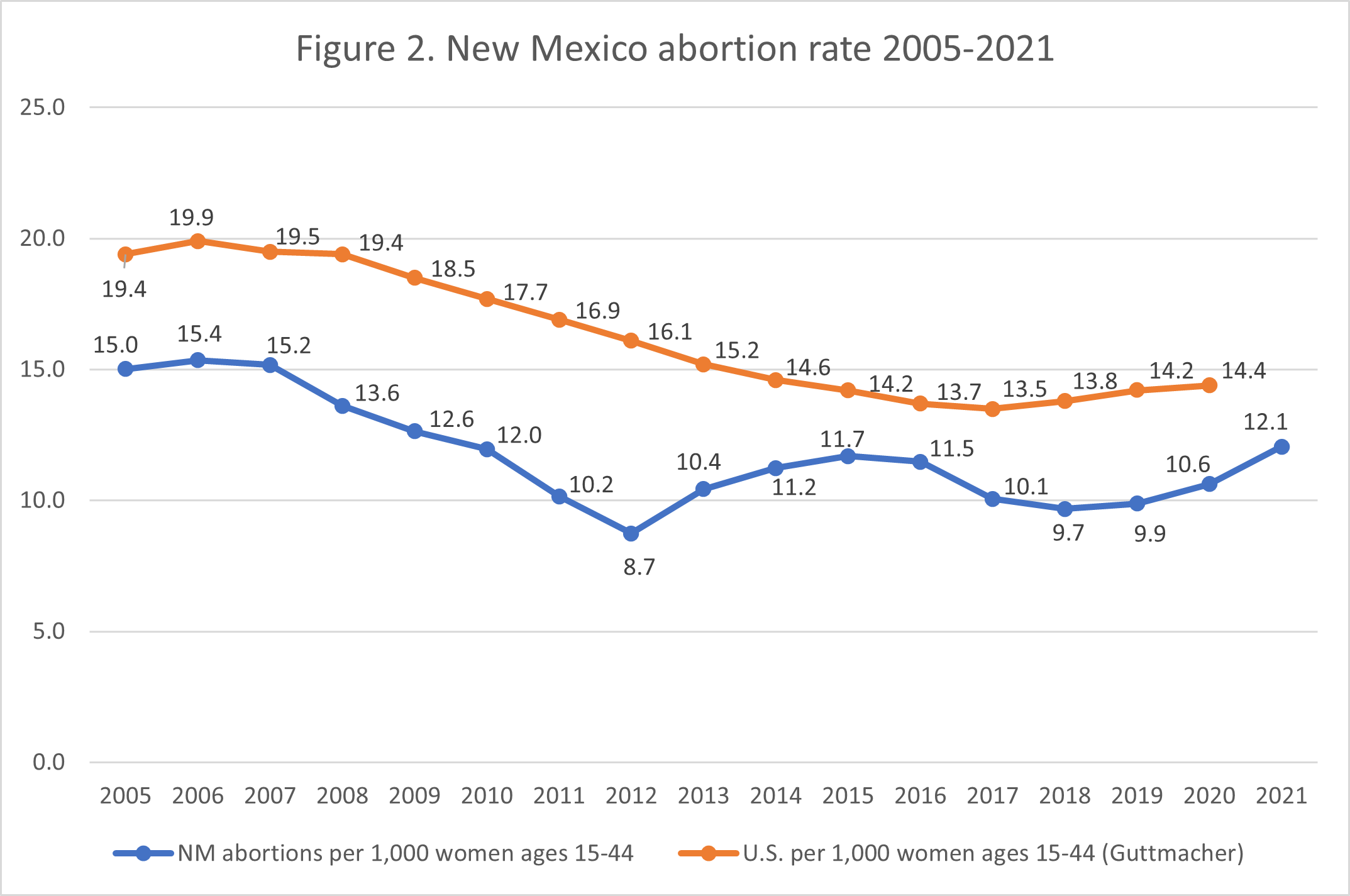
- National rates were calculated by the Guttmacher Institute. New Mexico rates were calculated by CLI using the following formula: (total number of abortions performed in New Mexico ÷ number of resident women ages 15-44 [based on most recent population estimates]) x 1,000. Rates may differ slightly from previous CLI articles due to revised population estimates. Population estimates were obtained from the CDC WONDER database. Estimates for 2005-2009 are intercensal estimates of the July 1 resident population. Estimates for 2010-2019 are Vintage 2020 postcensal estimates of the July 1 resident population. Estimates for 2020-2021 are Vintage 2021 postcensal estimates of the July 1 resident population. Estimates were produced by the U.S. Census Bureau and the National Center for Health Statistics
- Abortion totals are from the CDC’s abortion surveillance reports. New Mexico did not report chemical abortion totals to the CDC from 2015 through 2018.












